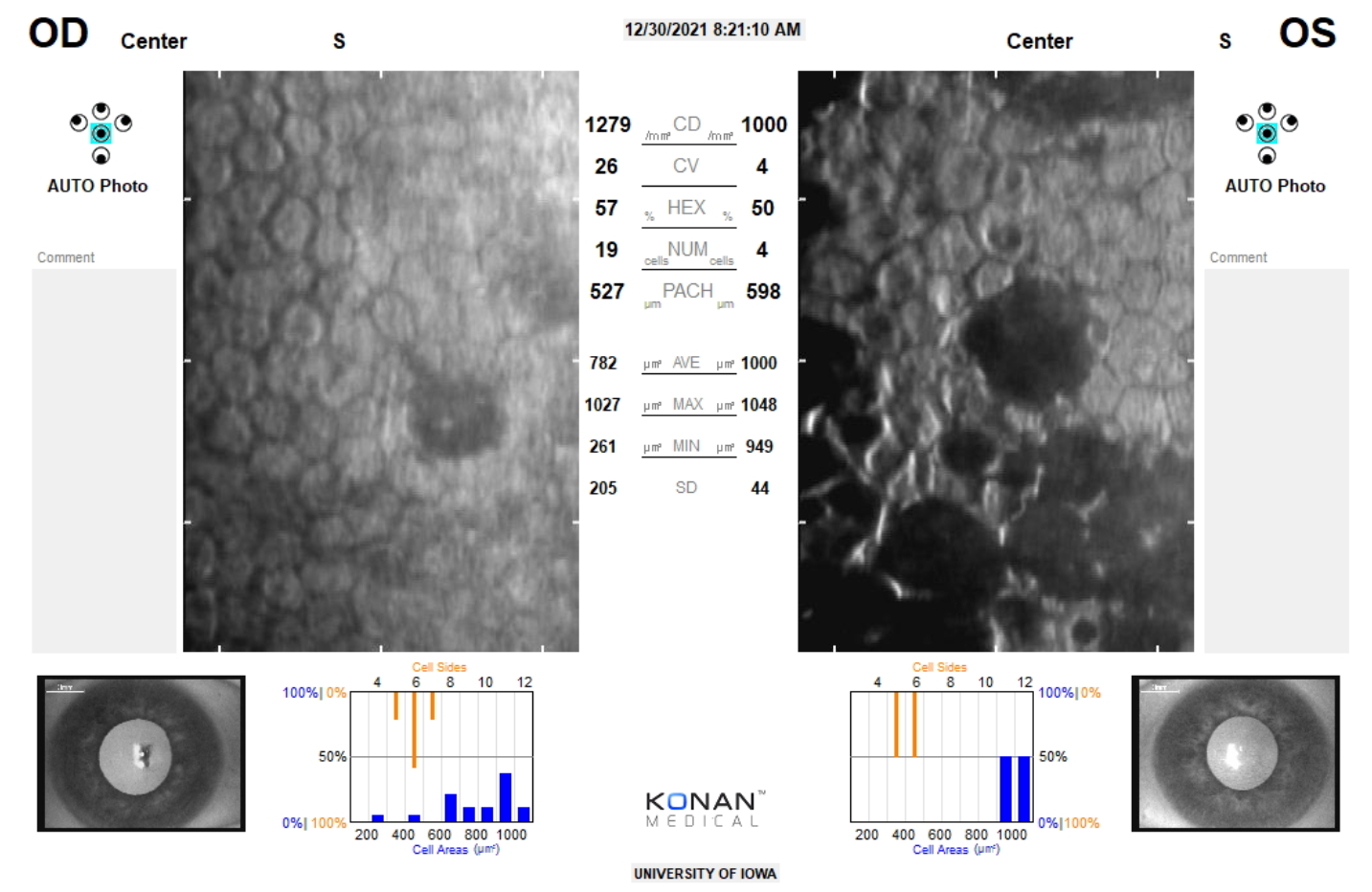 |
| An increased risk of Fuchs’ was linked to female sex, European ancestry and multimorbidity. Photo: Christine Sindt, OD. Click image to enlarge. |
New data showed that female sex, European ancestry and multimorbidity are associated with an increased risk of Fuchs’ endothelial corneal dystrophy (FECD). These findings, which were recently published in Cornea, also highlight a relationship between diabetes and FECD.
The researchers, who aimed to assess risk for demographic variables and other health conditions associated with FECD, developed a case-control algorithm based on structured electronic health record data. Accuracy of the algorithm was confirmed by reviewing charts at three Veterans Affairs Medical Centers.
In this analysis, the algorithm was applied to the Department of VA Million Veteran Program cohort. Sex, genetic ancestry, comorbidities, diagnostic phecodes and laboratory values were extracted for these individuals. Investigators determined the association of these risk factors with FECD diagnosis via single-variable and multiple-variable logistic regression models.
Data showed that female sex, European genetic ancestry and a greater number of comorbidities is associated with an increased risk of FECD. Of 1,417 diagnostic phecodes evaluated, the study authors reported that 15% (n=213) had a significant association with Fuchs. This encompassed ocular and nonocular conditions, including diabetes.
Five of 69 laboratory values (7.2%) were associated with Fuchs. The connection between diabetes and an increased FECD risk was supported by endocrine/metabolic clinic encounter codes and altered patterns of laboratory values, according to the investigators.
“In the future, it will be important to better understand the relationship between FECD and diabetes mellitus. Insights regarding this relationship may identify opportunities for slowing FECD progression,” the study authors noted in their paper. “We anticipate that our case-control algorithm will open the door for further FECD gene discovery.”
Nealon CL, Halladay CW, Gorman BR, et al. Association between Fuchs endothelial corneal dystrophy, diabetes mellitus and multimorbidity. Cornea. May 12, 2023. [Epub ahead of print]. |

